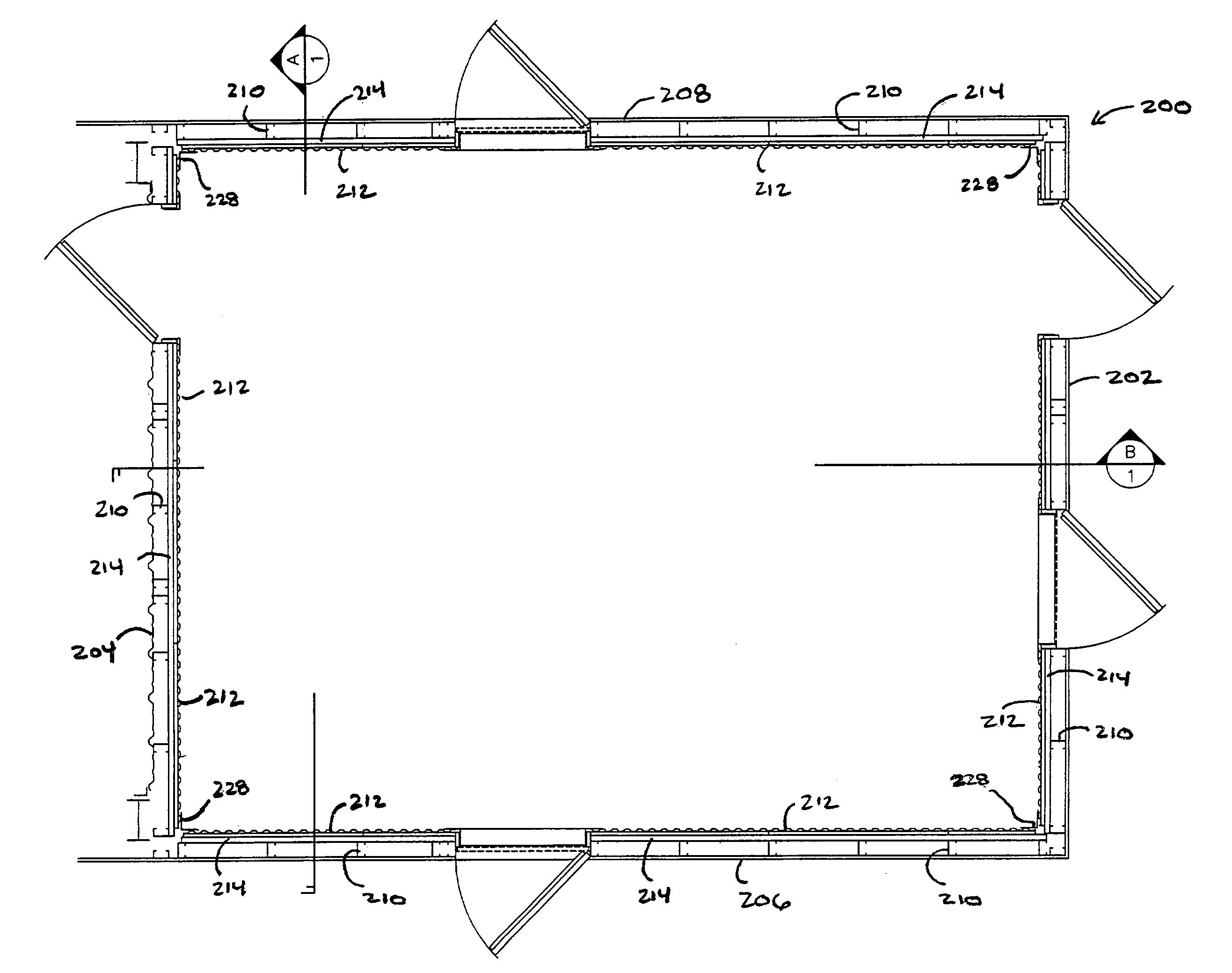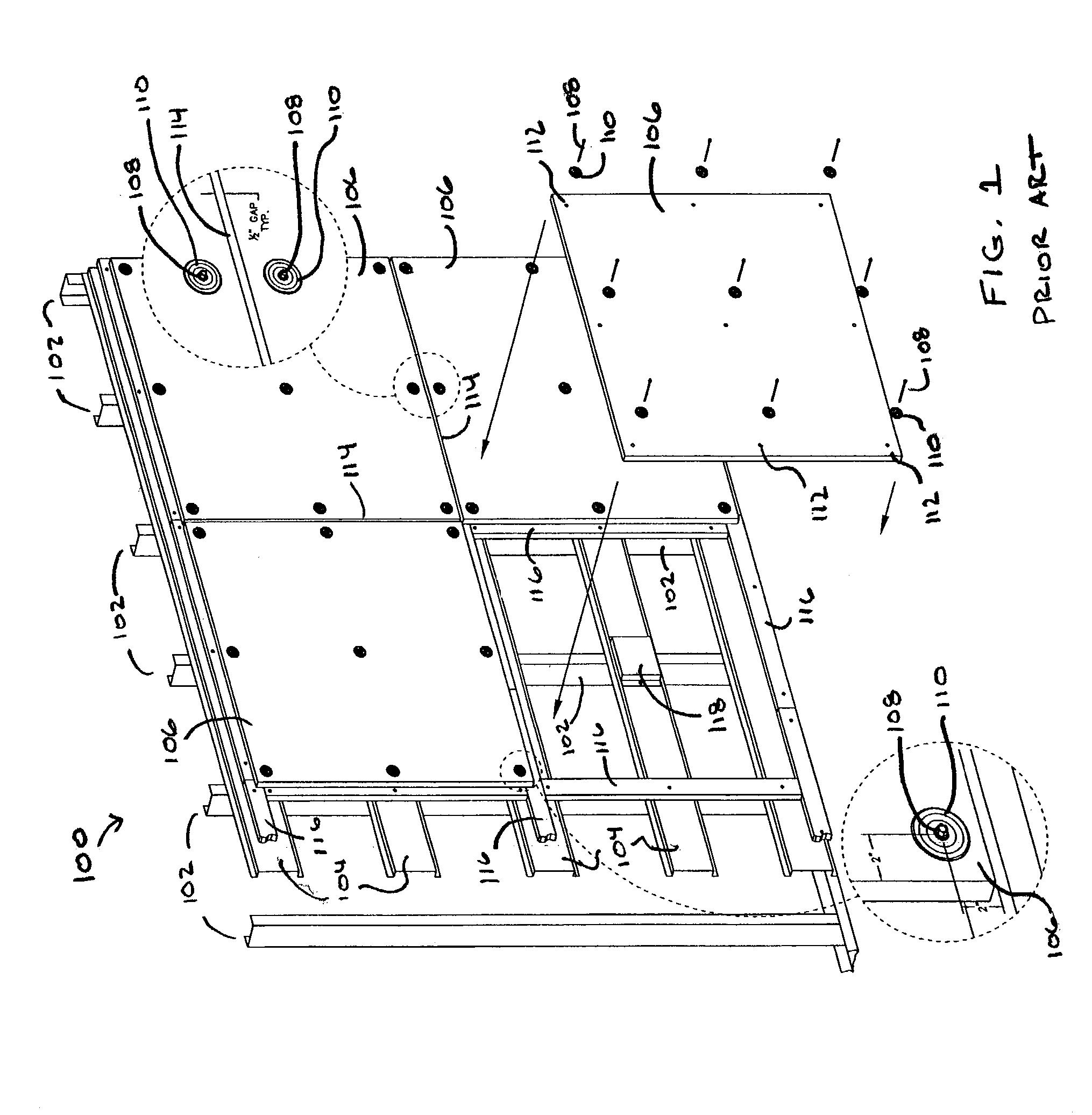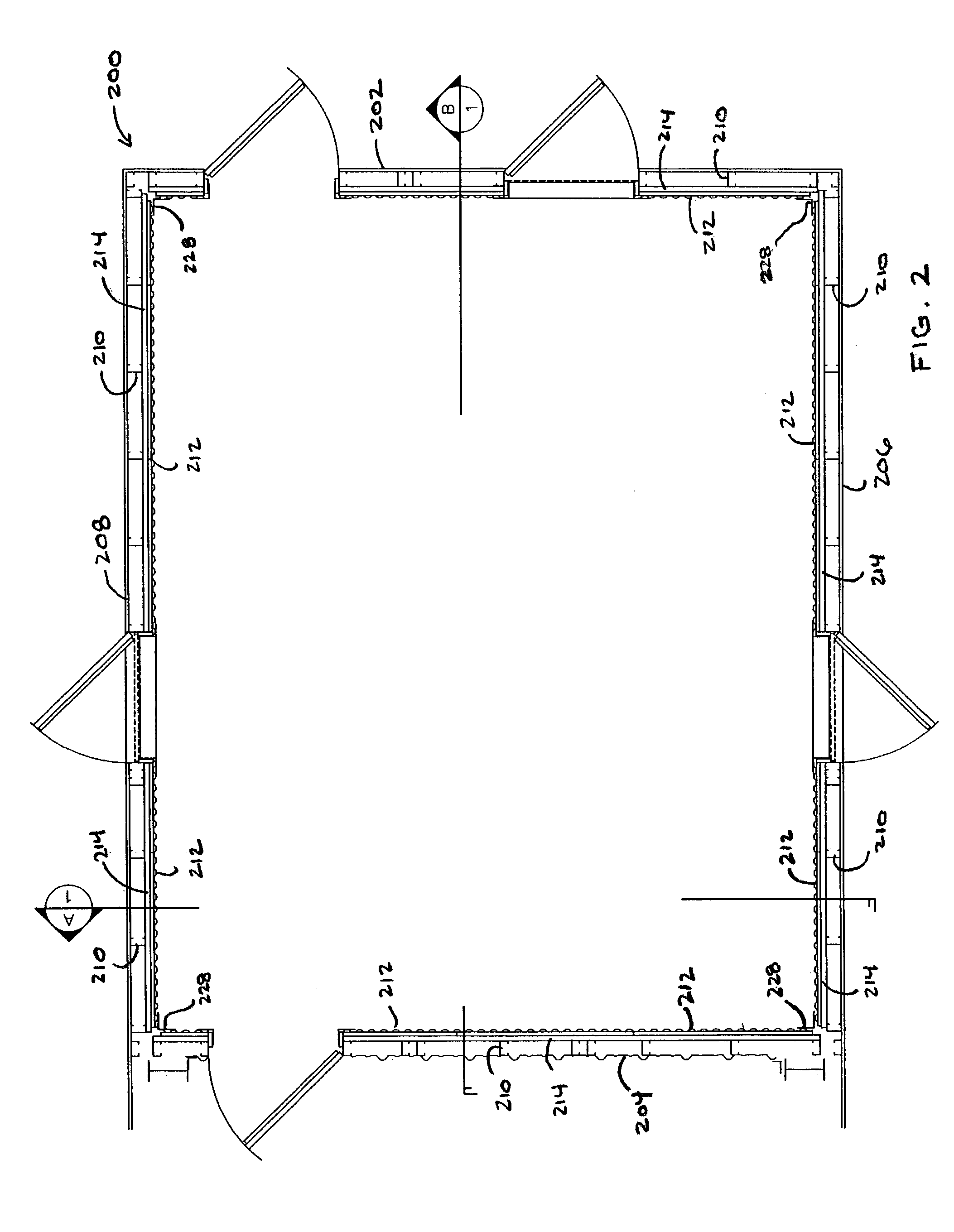Live fire burn room and insulating system for a live fire burn room
a technology of insulating system and burn room, which is applied in the field of live fire burn room and insulating system, can solve the problems of material damage, loss of inherent moisture, and continued deterioration
- Summary
- Abstract
- Description
- Claims
- Application Information
AI Technical Summary
Benefits of technology
Problems solved by technology
Method used
Image
Examples
Embodiment Construction
[0065]While the present invention will be illustrated with reference to a particular live fire burn room and a particular insulating system having particular configurations and particular features, the present invention is not limited to these configurations or to these features and other configurations and other features can be used. Also, although the present invention will be illustrated with reference to using the burn room and insulating system in connection with firefighter training structures, the present invention may have use in other applications and other industries as well. For example, the insulation system of the present invention may be used to insulate rooms other than burn rooms.
[0066]Generally, the present invention involves a live fire burn room and an insulating system for a live fire burn room. The term burn room, or live fire burn room, as used herein, means a room that is specially designed to contain a continuous live training fire during a firefighter traini...
PUM
 Login to View More
Login to View More Abstract
Description
Claims
Application Information
 Login to View More
Login to View More - R&D Engineer
- R&D Manager
- IP Professional
- Industry Leading Data Capabilities
- Powerful AI technology
- Patent DNA Extraction
Browse by: Latest US Patents, China's latest patents, Technical Efficacy Thesaurus, Application Domain, Technology Topic, Popular Technical Reports.
© 2024 PatSnap. All rights reserved.Legal|Privacy policy|Modern Slavery Act Transparency Statement|Sitemap|About US| Contact US: help@patsnap.com










